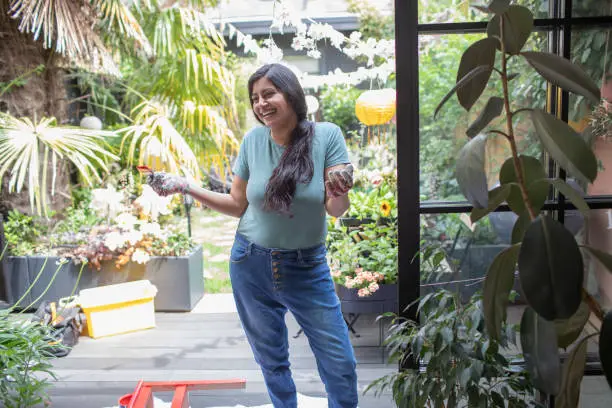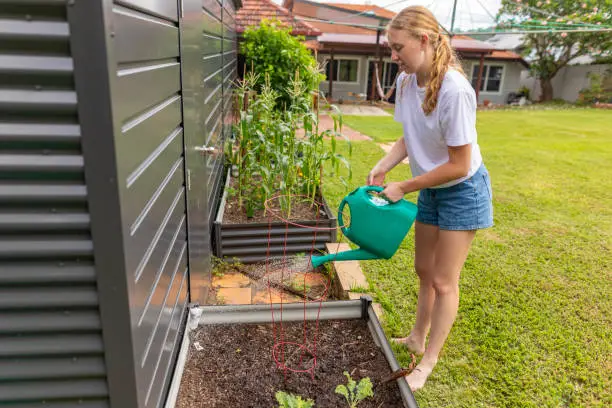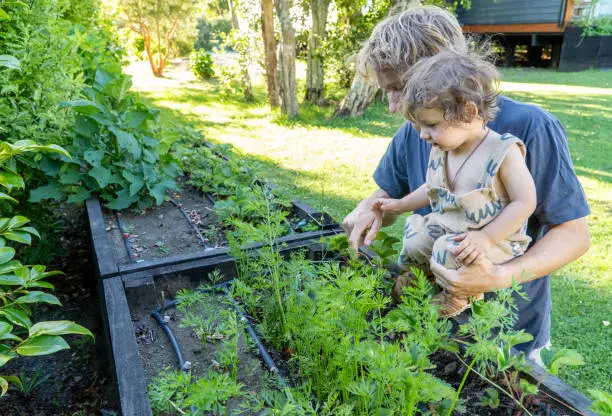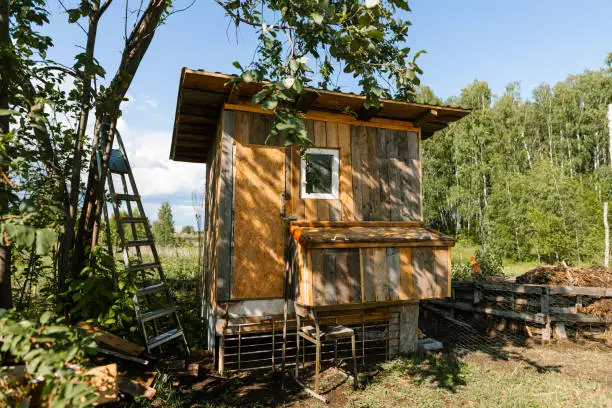Imagine a beautiful, tasty backyard. Imagine picking tomatoes for your salad or herbs outside your kitchen door. Dreamy, right? Now is the moment to realize that desire. Learn how edible plants can improve your backyard homesteading landscape.
Start with planning. It’s like making a treasure map before an excursion. Know what you want and where it should go. Sketch your yard and mark sunny, shady, and well-drained regions. It helps determine which plants thrive where.
Now comes the fun—plant selection! Edible plants abound. Choose from vivid vegetables, aromatic herbs, and delicious fruits. Consider what you like to eat and what grows well in your climate.
Vegetables first. Tomatoes are easy to grow and popular. Find them a sunny spot—they love sunbathing all day. Carrots and radishes thrive in limited spaces and container gardens because they don’t mind filthy.
Herbs are like supporting actors in a great movie—they steal the spotlight sometimes! Basil, rosemary, thyme—these little fellas add flavor without any effort.
Fruit trees require more work, but they’re worth it! Imagine eating an apple from your tree or creating lemonade from your lemons. Give them room to stretch their limbs and drink up the sun.
Speaking of space, consider vertical gardening! If you have little ground but lots of vertical space, consider planting beans or peas on fences or walls. They’ll happily climb trellises or poles to conserve ground space.
Also, interplanting diverse plants can maximize space and boost development by naturally discouraging pests. Planting marigolds among tomatoes will deter worms and give color!

Who says edible landscapes can’t be pretty? Many edible plants are attractive! Rainbow chard boasts vibrant stems, purple basil provides flavor and color, and nasturtiums have beautiful blossoms and peppery salad leaves.
Every garden needs TLC, so let’s talk maintenance. Good drainage is essential for watering vegetables, which like continuous hydration but loathe soggy feet. Mulching retains moisture and prevents weeds—a win-win!
Fertilizing—like giving your plants vitamins—is crucial. Organic compost improves soil health without contaminating food.
There are several natural ways to prevent pests from eating your hard work! Companion planting, like our marigold-tomato combo, deters pests and attracts beneficial insects like ladybugs that eat aphids!
Pruning seems scary, but it’s more like haircuts than surgery! Regular trimming removes dead or damaged branches and shapes wayward branches for healthy development!
The harvest season—when all your hard work pays off—is finally here! Harvest regularly to avoid overripe vegetables rotting on vines and ensure season-long output!
This beginner’s guide shows how to smoothly and stylishly incorporate food treats into backyard landscaping without breaking a sweat or your cash balance!
Having fun along the way is more essential than the destination—it’s the ride!
Low-Maintenance Backyard Homesteading Perennials
Are you sick of replanting your garden every year? Yes, I understand. Who has time? Perennial vegetables are the gift that keeps on giving. These plants return year after year, saving time and effort. Turn your backyard homesteading into a low-maintenance food heaven with these great options.
Asparagus: Early Bird
Start with asparagus. The veggie is like that friend who arrives early to the party. Plant it once; it’ll return for decades. Though it takes two years to establish, patience pays reward. Imagine spring asparagus spears growing without effort!
Rhubarb: Tart and Hardy
Next is rhubarb. Tartness makes it ideal for pies and jams. Plant it in sunny, well-drained soil and watch it thrive without much care. Remember to avoid eating harmful leaves!

Jerusalem artichokes—a hidden gem
Jerusalem artichokes (sunchokes) are garden treasures. The underground tubers can be picked in late fall or early winter. Their nutty flavor is lovely, roasted or mashed.
Sorrel: The Spicy Green
Sorrel is another treasure. Lemony leaves brighten salads and soups. It thrives on neglect—plant it in the sun, water it periodically, and enjoy it.
Old-Timer Good King Henry
Good King Henry is authentic and delicious despite its fairytale origins. It’s nutritious and easy to grow, comparable to spinach or chard.
Sea Kale—Coastal Delight
Sea kale will make your backyard coastal. Its thick leaves cook like kale or cabbage and taste great. Those who live near the ocean will love its salt tolerance.
Walking Onions: Nature’s Convenience Food
Walking onions are intriguing creatures. They “walk” by developing little bulbs on their stalks that fall over and root. Imagine having an onion factory in your yard!
Lovage—The Flavor Bomb
A little lovage tastes like celery on steroids! Add its leaves to soups and stews for rich flavor.
The Nuttier Alternative: Groundnut
Groundnuts taste like nuts but are tubers like potatoes. Because they’re healthful and adaptable, Native Americans ate them regularly.
Use Horseradish to Spice Up Your Life
If you like spicy food, horseradish is your new best buddy. Freshly grated roots from this resilient plant carry a punch.
Let’s discuss how these perennials simplify life:
1. Less Work: They don’t need annual planting because they return.
2. Because their roots stay put, perennials help maintain soil structure.
3. Biodiversity: Diverse plants attract beneficial insects and discourage pests.
4. Sustainability: Growing perennials lowers waste by reducing seed and seedling purchases.
5. Beauty: Lush greens and brilliant colors make many perennial veggies appealing.
Okay, then! How to begin:
Step 1: Select Plants
Avoid divas by choosing climate-appropriate kinds. Search local nurseries or internet perennial providers.
Step 2: Prepare Soil
Loosen the dirt 12 inches deep and incorporate compost if needed (most perennials are very forgiving).
Step 3: Planting
Follow the spacing and depth requirements for each variety, but usually, space them far enough apart but not too far!
Step 4: Mulch and Water
Water thoroughly after planting and mulch around the base to maintain moisture and prevent weeds (win-win).
Step 5: Patience Pays Off
Hold on—most perennials require time to establish themselves before producing abundant harvests. It’ll be worth it!
Imagine a tasty, lovely backyard. Imagine gathering herbs or tomatoes for salad outside your kitchen door. Pretty, huh? That can be fulfilled now. Eatable plants can enhance your backyard homesteading landscape.
Start planning. It is like a treasure map before a trip. Know your goals and direction. Mark sunny, shady, and well-drained areas on your yard sketch. This determines plant habitat.
The fun begins—plant choosing! Edible plants abound. Choose colorful veggies, fragrant herbs, and tasty fruits. Consider what you want to eat and what grows well locally.
Vegetables first. Growing tomatoes is simple and popular. Choose a sunny spot—they love sunbathing all day. Radishes and carrots tolerate dirt well in container gardening and small spaces.
Herbs can steal the show like supporting actors in a fantastic film! Basil, rosemary, and thyme—these little guys bring taste without effort.
Fruit trees are worth the extra work! Picture eating an apple from your tree or making lemonade from your lemons. Allow them to stretch and soak up the sun.
Regarding space, try vertical gardening! If you have little ground space but lots of vertical space, plant beans or peas on fences or walls. They love climbing trellises and poles to save space.





Leave a Reply
You must be logged in to post a comment.